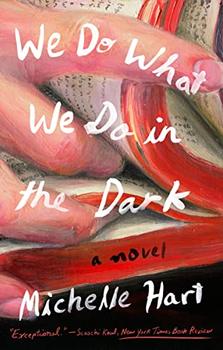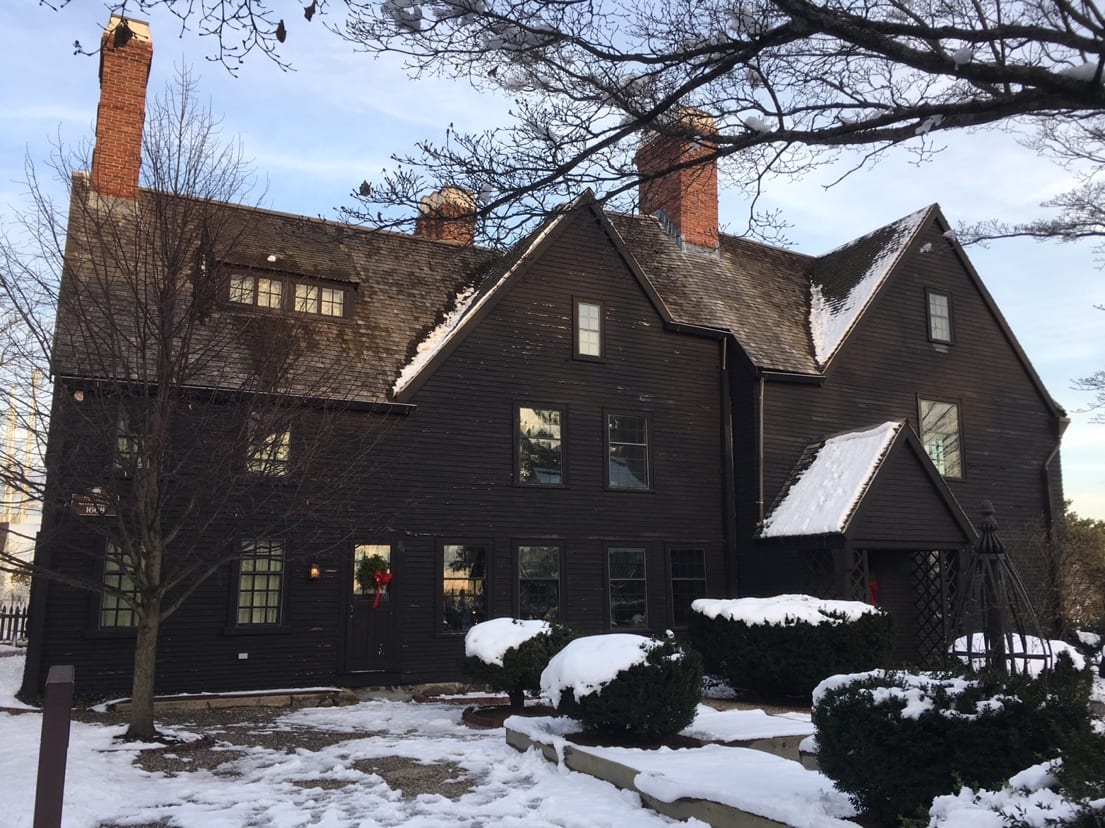Summary | Excerpt | Reading Guide | Reviews | Beyond the Book | Read-Alikes | Genres & Themes | Author Bio

A Novel
by Michelle HartThis article relates to We Do What We Do in the Dark
 In We Do What We Do in the Dark by Michelle Hart, the main character, Mallory, visits the House of the Seven Gables, a historic landmark in the town of Salem, Massachusetts that inspired a novel by Nathaniel Hawthorne. She does so following a conversation with a character known only as "the woman," with whom she had an affair years earlier, when she was a college student and the woman was married. Mallory mentions Hawthorne's The Scarlet Letter, a book she has gained a newfound fondness for since her affair with the woman, due to its theme of adultery; the woman recommends that Mallory read The House of the Seven Gables, and mentions that the actual house is located in Salem, where the two of them are staying at the time.
In We Do What We Do in the Dark by Michelle Hart, the main character, Mallory, visits the House of the Seven Gables, a historic landmark in the town of Salem, Massachusetts that inspired a novel by Nathaniel Hawthorne. She does so following a conversation with a character known only as "the woman," with whom she had an affair years earlier, when she was a college student and the woman was married. Mallory mentions Hawthorne's The Scarlet Letter, a book she has gained a newfound fondness for since her affair with the woman, due to its theme of adultery; the woman recommends that Mallory read The House of the Seven Gables, and mentions that the actual house is located in Salem, where the two of them are staying at the time.
The House of the Seven Gables, also known as the Turner-Ingersoll mansion, was constructed in 1668 for Captain John Turner I, who belonged to a prominent New England maritime family. The dwelling stayed with the Turners for three generations before being sold to another seaman, Captain Samuel Ingersoll, in 1782. After Ingersoll died, his daughter Susanna inherited the house. Nathaniel Hawthorne was a second cousin of Susanna's, and a frequent visitor to the residence when he lived in Salem during the 1840s.
In 1851, Hawthorne published The House of the Seven Gables, a gothic romance revolving around an intergenerational curse that haunts the Pyncheon family. They live in a house resembling the Turner-Ingersoll mansion that was acquired by an ancestor believed to have been responsible for the previous owner's hanging due to accusations of witchcraft. Hawthorne was influenced by his own ancestral links to the infamous Salem Witch Trials, and he feared that his family had been cursed in a similar way to the fictional Pyncheons.
Interestingly, Hawthorne received letters of protest from members of a real-life Pynchon family — whose descendants would include the novelist Thomas Pynchon — concerned about him sullying their name. Hawthorne reacted with irritation to these missives, writing to his publisher, "I have just received a letter from another claimant of the Pyncheon estate. I wonder if ever, and how soon, I shall get at a just estimate of how many jackasses there are in this ridiculous world."
In Hart's novel, Hawthorne's books and the setting of Salem are a reminder of America's puritanical roots, as well as the residual sense of guilt and secrecy Mallory and the woman both harbor about their affair. They are also a reminder of the ways these roots are still present in current social judgment, particularly surrounding women's sexual lives.
When Mallory takes a guided tour of the House of the Seven Gables, she is struck by a portrait of Susanna Ingersoll, noting that Susanna referred to the house as "her own private prison." This makes Mallory think of the solitude that both she and the woman with whom she had an affair cultivated early in life, which served to create the secretive atmosphere of their relationship. Later, in a sunny area near the Witch Trials Memorial, Mallory witnesses two girls, who may be a couple, crying out after they believe their camera's facial-recognition mode was activated by a ghost. Mallory is annoyed by the girls drawing attention to themselves, but intrigued by the easy way they express affection with each other in public. The contrast between the dark solitude of the mansion and the outdoor sunshine represents the contrast between the way Mallory felt compelled to hide herself with the woman versus her desire for a relationship that can take place in the open.
As is portrayed in the novel, the House of the Seven Gables is today a museum open to the public. It is, according to its website, "one of the largest timber-framed mansions in North America still on its original foundation," and it maintains its fame through Hawthorne's literary legacy.
The House of the Seven Gables, courtesy of the Salem Witch Museum
Filed under Books and Authors
![]() This "beyond the book article" relates to We Do What We Do in the Dark. It originally ran in May 2022 and has been updated for the
May 2023 paperback edition.
Go to magazine.
This "beyond the book article" relates to We Do What We Do in the Dark. It originally ran in May 2022 and has been updated for the
May 2023 paperback edition.
Go to magazine.
I find that a great part of the information I have was acquired by looking something up and finding something else ...
Click Here to find out who said this, as well as discovering other famous literary quotes!
Your guide toexceptional books
BookBrowse seeks out and recommends the best in contemporary fiction and nonfiction—books that not only engage and entertain but also deepen our understanding of ourselves and the world around us.